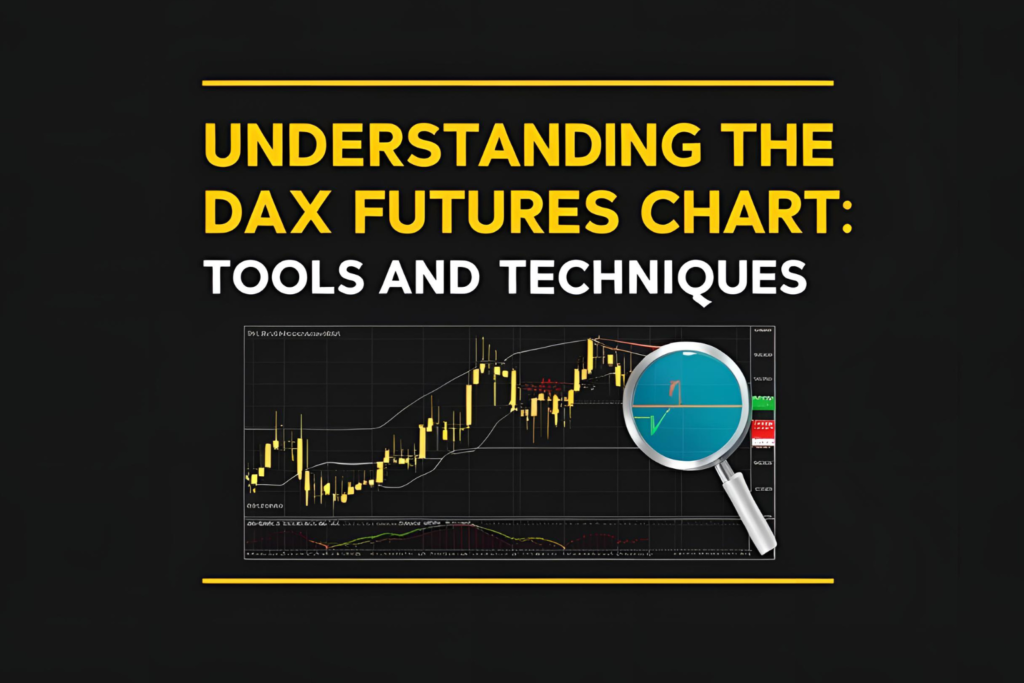The DAX 40 index remains one of the most actively traded markets in Europe, and its futures contracts—especially on Eurex and CME—offer great opportunities for both short-term and swing traders. But to succeed, you need tested DAX futures trading strategies suited for today’s volatility and macro trends.
Here are the top strategies that traders are using to profit from DAX futures in 2025.
1. Opening Range Breakout Strategy
Best for: Intraday scalping
Timeframe: 5-min or 15-min chart
Key Session: 09:00–10:30 CET (European cash open)
How it works:
- Mark the high/low of the first 15–30 minutes after market open
- Wait for a breakout above/below with confirmation on volume
- Enter in the breakout direction with a stop just beyond the range
📌 This works well when economic news or earnings results are driving early volatility.
2. Pullback to VWAP Strategy
Best for: Momentum traders
Timeframe: 5-min or 15-min
Indicators: VWAP, EMA(20), price action
How it works:
- Identify trending market (price above VWAP and 20 EMA)
- Wait for pullback to VWAP with bullish/bearish confirmation candle
- Enter trade with stop below recent minor swing low/high
🎯 Use this to trade with institutional momentum during active sessions.
3. EMA Trend Catch Strategy
Best for: Swing and short-term intraday
Timeframe: 1H or 4H chart
Indicators: EMA(20), EMA(50), RSI
Setup:
- Long: EMA20 > EMA50 + RSI above 50
- Short: EMA20 < EMA50 + RSI below 50
- Entry on minor retracement toward EMA20 with confirmation candle
📈 Great for catching mid-trend moves without chasing price.
4. News-Based Spike Reversal
Best for: Volatile news reactions
Timeframe: 1-min to 5-min charts
Tools: Economic calendar, news feed, reversal candles
How it works:
- Identify overreactions to news events (e.g., ECB decisions, inflation data)
- Watch for rapid spike with volume exhaustion
- Enter in the opposite direction after reversal candle forms
⚠️ Use tight stop-loss and monitor spreads during execution.
5. Range-Bound Scalping
Best for: Low-volatility days or overnight sessions
Timeframe: 15-min to 1H
Tools: Horizontal support/resistance, Bollinger Bands
Steps:
- Identify well-defined trading range
- Buy near support, sell near resistance
- Confirm entries with candlestick patterns or Bollinger bounce
🟨 Ideal during low-volume post-market hours (22:00–01:00 CET).
Bonus: DAX Futures + U.S. Session Correlation
- Monitor U.S. index futures (e.g., ES, YM)
- Use U.S. open at 14:30 CET / 08:30 EST to time DAX volatility
- Enter short-term trades in DAX futures based on SPX/Dow movements
Risk Management Rules
Use fixed stop-loss based on ATR or swing structure
Don’t over-leverage—especially on FDAX (full-size)
Stick to your strategy time window and avoid impulse entries
Monitor macro events and adjust sizing if volatility spikes
Final Thoughts
These DAX futures trading strategies are time-tested but must be adapted to your risk tolerance and trading style. Start with backtesting on your chosen platform, use proper position sizing, and refine your entries around key economic events.
The DAX offers rich volatility—but only for disciplined traders.
FAQs
1. Which strategy works best for beginners?
Start with VWAP pullback or range scalping—they’re easier to manage.
2. Can I automate these DAX strategies?
Yes. Most platforms support scripting tools (e.g., TradingView’s Pine Script, NinjaTrader bots).
3. Do these work with Micro DAX on CME?
Absolutely. The strategies apply across all contract sizes.
4. How do I know when to avoid trading?
Skip sessions with thin volume, major news uncertainty, or spread widening.
5. Do I need live Eurex data?
Yes—for accurate execution and real-time confirmations, live data is critical.

